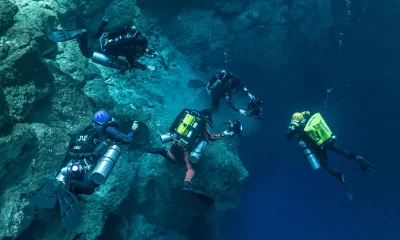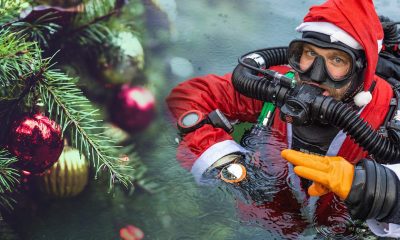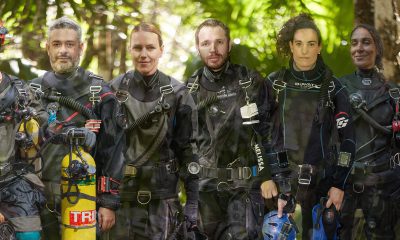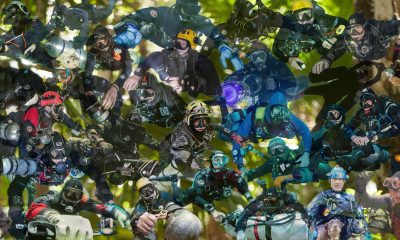Community
The Who’s Who of Sidemount
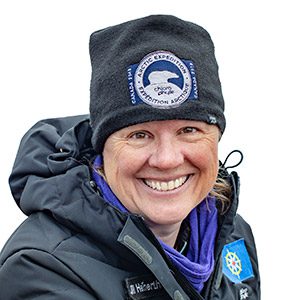
Jill Heinerth
Jill Heinerth, Into the Planet, is a world renown cave explorer, author and modern-day pioneer of sidemount diving. Her and Brian Kakuk wrote Sidemount Profiles (2010). She is a Fellow of the Explorers Club, a Fellow of the National Speleological Society, and has been inducted into the Women Divers Hall of Fame and the International Scuba Diving Hall of Fame. In 2016, Jill was named as the first Explorer-in-Residence for the Royal Canadian Geographical Society and continues to lead the way as one of the world’s leading divers. Her book, Into The Planet, has been lauded by The Wall Street Journal, O: The Oprah Magazine, and The New York Times.
What is sidemount to you?
I was diving sidemount before I learned to dive in doubles. When I first arrived in Florida, I was told that one “had to use back-mounted doubles” for cave diving. It seemed ridiculous to me then, and it still does today. Sidemount is so much easier to trim, and carrying single tanks through a jungle or lowering singles into a cave on a rope is much safer. Closing in on 60 years of age, I can also attest that my back prefers carrying single tanks to the fill station. My lower back becomes strained in doubles and feels more comfortable in sidemount.
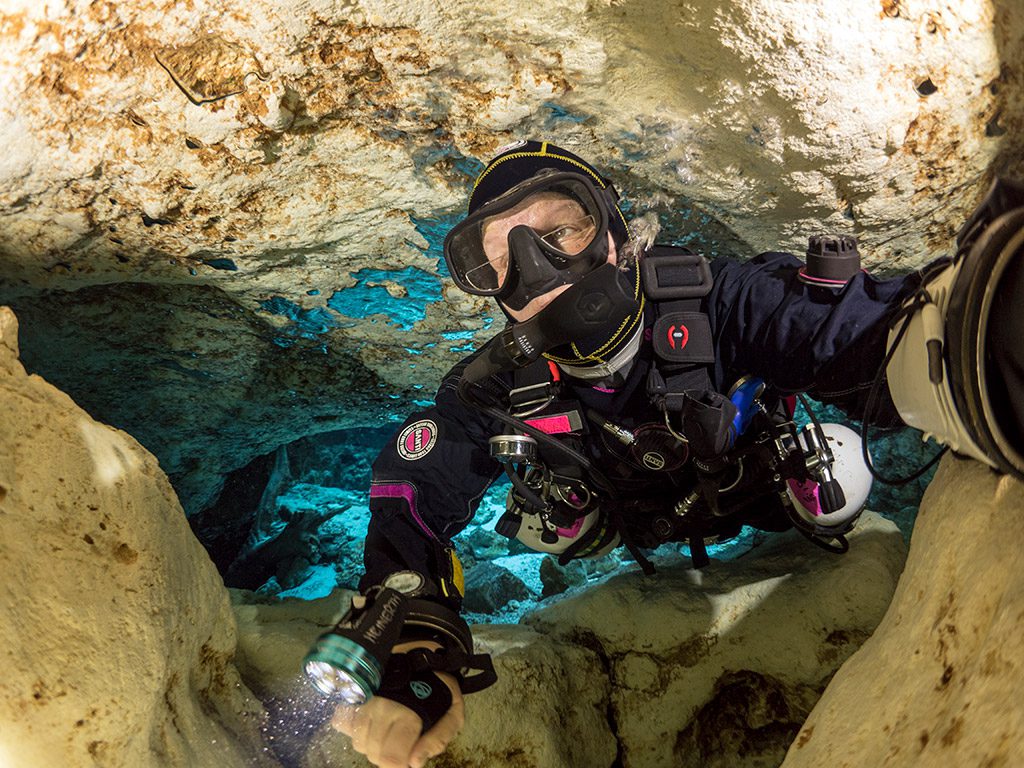
What issues are you finding as sidemount diving becomes more popular?
The biggest issue with the growing popularity of sidemount diving is that some people teaching the technique do not understand how to work with students to custom fit their gear. Women have a different center of balance than men, and I see instructors applying a one-size-fits-all attitude to helping them get comfortable and trimmed. The process of fitting someone properly can take a lot of time and personalization, like custom fitting a bicycle for a road racer. In the end, the tanks need to be aligned with the body, and yet I still see sidemount divers with tanks that are nearly perpendicular to their torso. You can’t get a great fit without professional help, so seek out an instructor with experience fitting a variety of body morphologies in different brands. If the sidemount instructor is also a cave or technical diver, they will be more likely to get your gear sorted properly for you.
How did sidemount affect the early years of your diving career?
For me, sidemount was always the way to go. I found my first cave with sidemount gear. I had a significant hike in the bush to get there, so carrying one tank at a time was the best way to go. My first sidemount rig was made from a pink Sherwood Genesis open water buoyancy compensating device (BCD) with bicycle inner tubes.
What are the negative aspects of sidemount?
I truly believe there are more options for quick responses to emergencies and self-sufficient diving can be achieved. I have noticed that some new cave divers “cheat” on their thirds in double tanks reasoning that they are taking a minor risk for themselves. Of course, that could not be further from the truth. The risky behavior affects the safety of the whole team. That said, I have rarely had a student try to “push” their thirds using sidemount.
Somehow, when you start your journey in a more self-sufficient manner, the lesson of reserving thirds seems to be more clear. In other words, I have noted that sidemount divers are more conservative than those in double tanks. The only downside I feel about sidemount is that it requires patience to get squared away. I can’t offer a blanket solution for a prospective sidemount diver; I can only tell them that we will pursue a journey together to find great fit, trim and comfort. They should recognize that the journey continues and that a small gear change, like a new set of fins, can mean they should fine tune their gear again.
What are the differences in properly fitting a woman vs a man in sidemount gear?
Women have a completely different center of balance from the male physique. Women’s shoulders slope downward and are generally narrower than men. Many sidemount rigs want to slip down our shoulders. A chest strap can correct that issue as long as it can be moved up and down to accommodate our breasts. Women have short torsos. Some sidemount rigs are too long in the torso for women, and even a tall woman may not be able to adjust some units and achieve proper fit.
The placement of the bands on our tanks may be completely different than a man. I like my tanks to be fairly low to achieve good, horizontal trim. Make sure you are able to reach a valve or reach your dry suit vent. You should have a full range of motion in a properly fitted harness. Your rig should be properly custom fitted with the help of an instructor that can make micro-adjustments to help you find your trim and comfort.
Return to: The Who’s Who of Sidemount
DIVE DEEPER
Speaking Sidemount: Episode #09: Jill Heinerth Interview: Sidemount and Exploration
YouTube: Sidemount Diving: Cave Divers, Explorers Jill Heinerth and Brian Kakuk
YouTube: Into The Planet
YouTube: Diving Sidemount Rebreathers – What’s It All About?
YouTube: Sidemount Diving Training Instruction: Jeff Loflin & Jill Heinerth




















